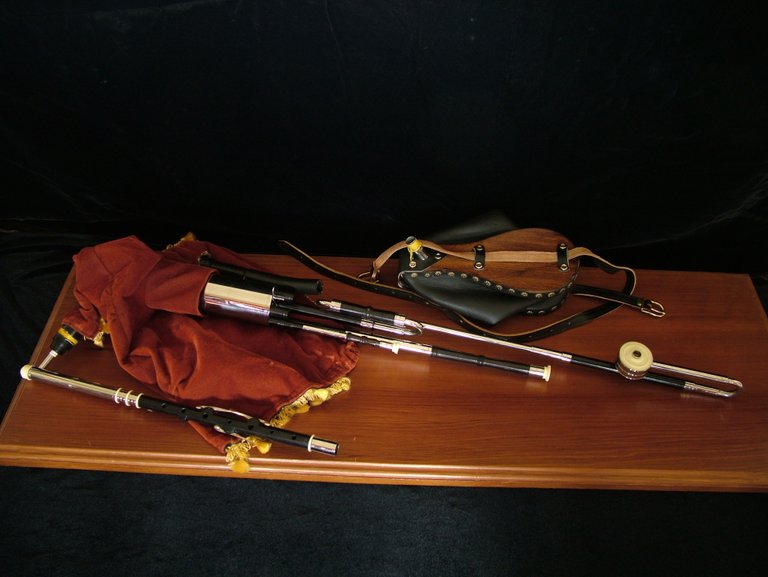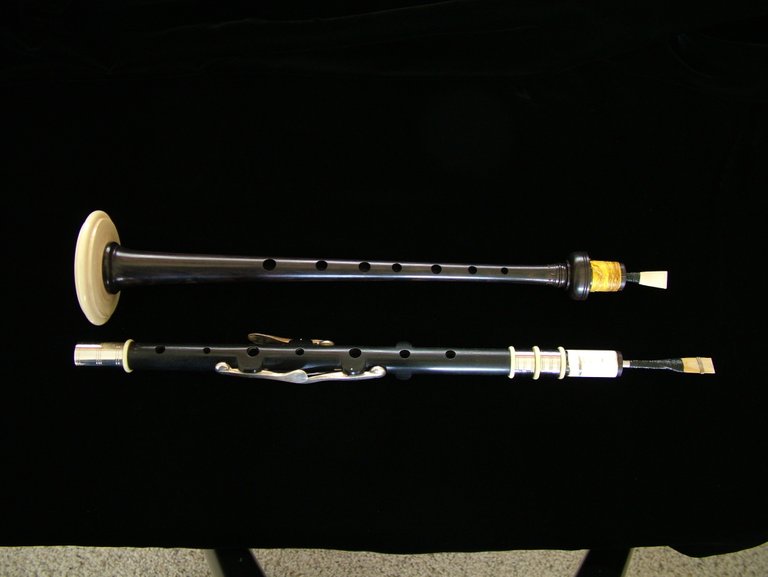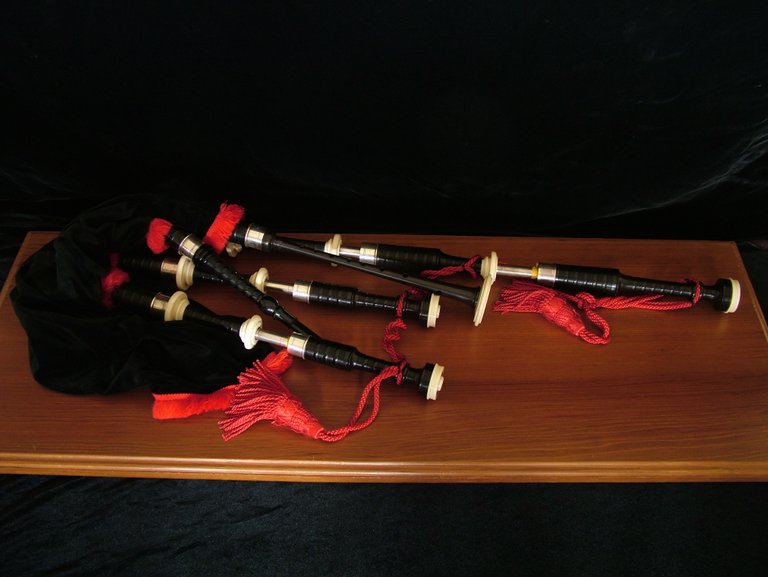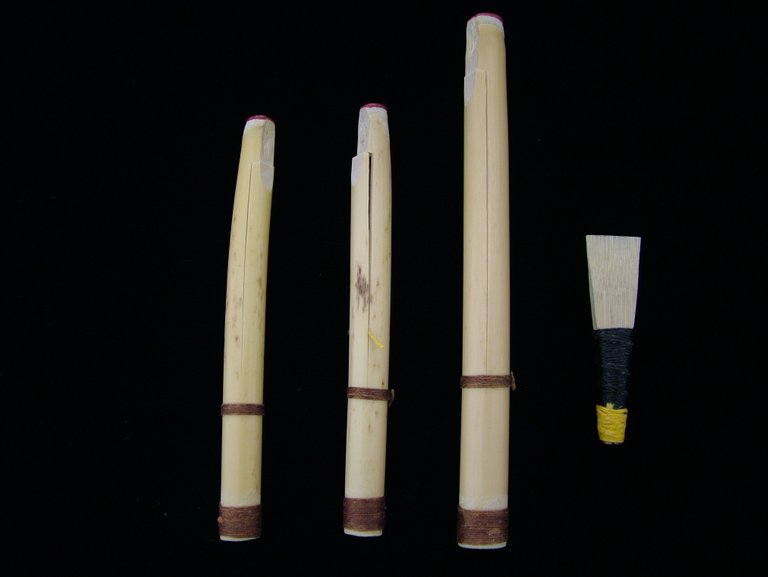
This example of a set of Croatian bagpipes reveals something that is often not widely known, namely that there are dozens of species of this instrument spread from the Celtic fringe of Britain and Ireland, all the way to Iran. Bagpipes can be divided into two groups when it comes to air source: mouth blown or, as is the case here, bellows driven. This Croatian instrument is arranged like the bellows-driven uilleann (Gaelic for elbow) pipes of Ireland.
This example of uilleann pipes is a "three-quarters" set, meaning it has a chanter (for the melody - bottom left) and three drones (alto, tenor, and base - middle of image), which are tuned to the same note, humming a constant pitch in three octaves. A full set of uilleann pipes would include an additional set of "regulators," which are drones that can change keys. The Croatian bagpipes illustrated above has only one drone, and this common for many species of bagpipes. The uilleann pipes belong to the same family as this Croatian instrument by virtue of the bellows (top right), which provides the air needed to make the instrument play.
In addition, the Croatian pipes appear to have a chanter that also places it in the same family as the uilleann pipes. Bagpipe chanters are either cylindrical or conical. The cylindrical chanter of an uilleann pipe (see above, bottom of the image) allows the musician to squeeze the bag harder to cause the instrument to sing into a second octave, something of a falsetto voice. This is distinct from conical chanters, as in this example from the Great Highland Bagpipes (see above, top of image) . The conical chanter in this case can only be played one octave (A to A with a G on the bottom). To be certain that the Croatian chanter is cylindrical it would be necessary to look down its bore, but this appears to be the case.
Scotland's mouth-blown Great Highland Bagpipes are internationally famous, eclipsing many of its cousins. This is partly because it is unique in the family of bagpipes in that it was adapted to serve in combat: it is far louder than most others, a volume necessary for it to be heard over the din of battle. In fact, after the Scottish rising of 1745, the government in London outlawed the possession of the Great Highland bagpipes, declaring them to be a weapon of war.

Most bagpipes have a soft enough volume that they can be played with other instruments. That said, the point of most bagpipes is that they can serve as a self-contained "musical group": while the chanter plays a melody, the drones hum along as additional instruments in accompaniment. This is not unlike the way the fiddle was traditionally played: the musician would play two strings simultaneously, one with the fingers moving along so that the string sang the melody while the other drones as a background.
Internationally, bagpipes generally use some form of reed to provide the vibration that the instrument manipulates to produce its sound. Drones reeds often used the entire cane with a "tongue" cut down the side to provide the vibration (see the three reeds above, to the left, from the Great Highland Bagpipe - the base drone reed is the largest). The chanters generally use a "double reed" (see above example, right, again from the Great Highland Bagpipe). The chanter reed consists of two cut reeds tied together; air flows between them so that they vibrate together. The double reed of the chanter places bagpipes in the same family with oboes, bassoons and English horns. All of these are imports from the Middle East, where the double reed is found, used in a way - without a bag - not unlike the medieval shawm (see below).

By adding a bag to a chanter, it was possible for the musician to play continuously while taking breaths. In addition, it was possible to add drones, allowing the combination to sound like multiple instruments. A single musician could then serve as an entire "band." The bagpipe appears to have been imported to Europe by the Romans, through contact with the Middle East. Romans apparently brought bagpipes to Britain where indigenous musicians were so impressed that they adopted the instrument and called it their own. Crusaders provided later contact with the Middle East and as a result, the shawm and its relatives - the oboe, bassoon, and English horn - became staples of European music.




It is really good to see you posting again! 🙂 Welcome back, and thanks for the article!
Thanks for the note. I've been tied up with a back-and-forth with copy edits for by forthcoming book on Cornish folklore. And in the midst of that, I found the inspiration (and somehow the time!) to complete an article that serves as an epilogue to the book. Typesetting and indexing are all that remains, at which point, the birthing process yields the baby!
Fantastic!